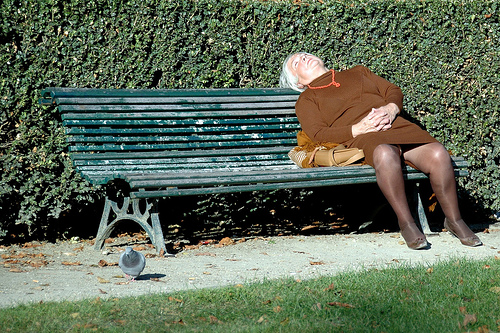 Evolution
Evolution
Major Discovery: Evolutionary Psychology Confirms that Many Men Are Cads

When the age-blighted bricks that hold up House Darwin start to topple, it may look a bit like what’s happening now to the Darwinian sub-specialty of evolutionary psychology. This pseudo-science attracts skepticism and eye-rolling — albeit usually tempered and mild — even from many Darwinists.
At Slate, psychologist Jesse Bering writes about a new study in Evolution and Human Behavior that would sure seem to be predictable media catnip, a confection of evolutionary storytelling about the human past spiced with large doses of cynicism about male and female sexuality.
The study used the customary small sampling of students from the local college whose preference in a sexual partner was the subject of inquiry. It discovered a tendency among the males to prefer photos of women who appeared vulnerable to being sexually exploited, including if the women appeared close to being unconscious. The young men disclosed that the pictures they found enticing disproportionately showed women who looked sleepy, inebriated, or simply stupid.
When asked about choosing a woman as a girlfriend or spouse, however, the men were drawn to ladies who seemed more alert, lively, and intelligent.
What in the world is surprising about this? Many men — most men? — have a bit of the cad in them, or worse, or much worse. That sleep or intoxication makes people vulnerable is no news either. The insight goes back back to the Bible and no doubt well beyond that. (Though interestingly all the stories of it in Scripture that I can think of involve men, not women, being victimized or taken advantage of when asleep or drunk.)
Not surprising either is that the researchers, a team at the University of Texas at Austin, slap the usual evolutionary explanation on what they found: Natural selection equips men with a drive to spread their seed with some abandon, a mission made easier when the woman is helpless. Women, on the other hand, have an interest in being more selective.
It’s refreshing to find Jesse Bering raising the obvious objections. For one thing, the researchers culled their photos by surfing the Internet. For whatever reason, photographers don’t take many photos of not especially attractive women who are about to fall down drunk or fall asleep for other reasons. Experimentally, I’ve just confirmed this to be true by doing a brief search on Flickr using the key words “woman” and “sleepy.” You have to comb through the pages to find a picture like the one above.
Writes Bering:
[G]iven that the photos of women were collected online, confounds are inevitable. Do photos of boozed-up young women posted on the Internet simply happen to depict more physically attractive females — ones who’ve dolled themselves up for parties, say — than the sober head shots of those who party less? It’s hard to believe that this would be the same for all the “exploitability” cues (such as “sleepy”) but the same problems would certainly apply to cues such as “tight clothes” and “come hither look.” To control for things like facial symmetry, it would have been better, in my opinion, to have the same model exhibiting a targeted sampling of the 88 cues generated by the original raters.
More fundamentally, you can come up with a plausible-sounding evolutionary explanation for any motif in human behavior or physiology, whether real or imaginary: anything you can think of, true or completely made up.
Here, let’s try an example. You say men actually prefer a casual sex partner who appears intelligent, sober and fully awake? Oh that’s because a woman like that is more likely to take care of her health and actually carry your offspring to term, care for the baby successfully, till it reaches maturity and can extend your genetic legacy. Hey, it’s natural selection, you know.
The fact of your having invoked the Darwinian mechanism as an explanation doesn’t mean that natural selection is actually responsible:
I think it’s fair to say that the findings are consistent with the authors’ sexual exploitability hypothesis — and evolved sex differences in reproductive strategies more generally. But here we run into one of the consistent criticisms of evolutionary psychology, which is that there can be a “just-so story” to explain every data set. Perhaps the effects reported by Goetz and her team can be interpreted just as well from a non-evolutionary perspective.
Successfully identifying a possibility doesn’t mean you have identified what actually happened, or why it did, whether the field is psychology or paleontology, biology or cosmology.
Photo credit: sekundo/Flickr.
